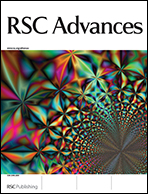Identifying distal cis-acting gene-regulatory sequences by expressing BACs functionalized with loxP-Tn10 transposons in zebrafish
Abstract
Bacterial Artificial Chromosomes (BACs) are large pieces of DNA from the chromosomes of organisms propagated faithfully in bacteria as large extra-chromosomal plasmids. Expression of genes contained in BACs can be monitored after functionalizing the BAC DNA with reporter genes and other sequences that allow stable maintenance and propagation of the DNA in the new host organism. The DNA in BACs can be altered within its bacterial host in several ways. Here we discuss one such approach, using Tn10 mini-transposons, to introduce exogenous sequences into BACs for a variety of purposes. The largely random insertions of Tn10 transposons carrying lox sites have been used to position mammalian cell-selectable


 Please wait while we load your content...
Please wait while we load your content...